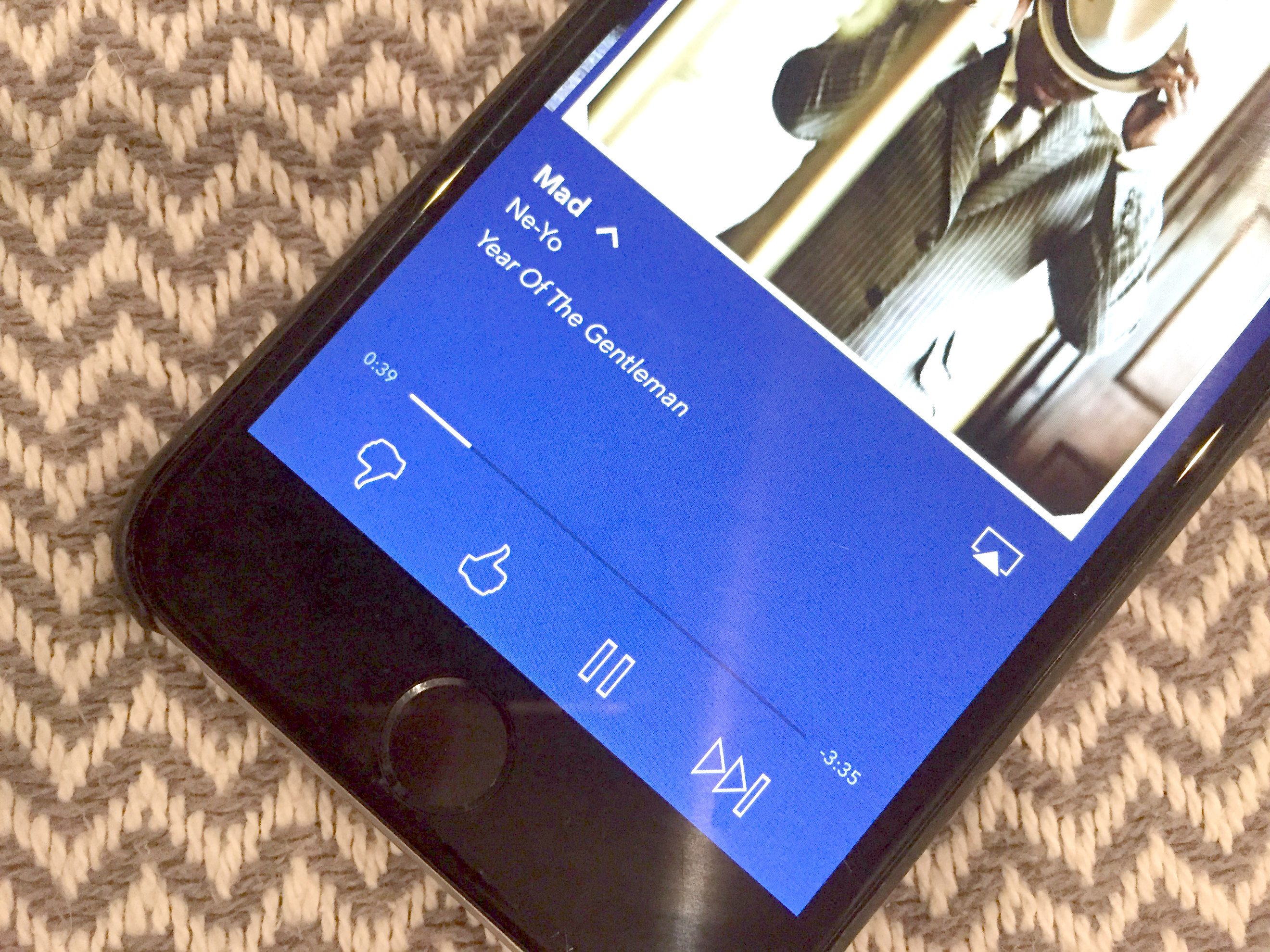 NEWS
NEWS
 NEWS
NEWS
 NEWS
NEWS
How do I tell an algorithm how much I love a song? Through data, presumably, and good design. A well designed app can infer the emotion behind user actions, teaching its artificial brain how to better serve humans by being more human. As the consumer web moves beyond the like button, services like Pandora (Pandora Media Inc.) design apps to more passively collect the data necessary to anticipate needs, provide the best recommendations and ultimately win the masses.
I love music enough to pay top tier subscriptions for two rival apps: Pandora and Spotify AB. For me, each serves its own purpose in music discovery and playlist creation, respectively. As the market for streaming music sees competition from influential players including companies like Apple and Google, as well as artists like Jay Z (Tidal), both Pandora and Spotify face pressure to be the one, single music app I open on my iPhone every day.
Pandora is betting big on my love for music as it revamps its online radio service after a slew of strategic acquisitions (Rdio, Ticketfly, and Next Big Sound) to build out features and grow its stagnant user base. According to a Fast Company article this morning, Pandora’s new CEO, founder Tim Westergren, seeks to enhance its radio capabilities with on-demand music access and concert ticket sales. Essentially Pandora wants to own all interactions between listener and artist, becoming the definitive marketplace for advertising, sales and research.
On the other side of the chasm is Spotify. Having nailed the on-demand music business, Spotify is putting forth strong efforts to match Pandora’s algorithm-based methods for recommending new content to listeners, with a handful of key acquisitions of its own (Echo Nest). Somewhere in the middle is a user-friendly experience that offers the best of both worlds.
Filling that chasm are the data silos owned by Pandora and Spotify, existing independently as proprietary business opportunities for each music service. While Pandora has been building its Music Genome for over a decade to map music preferences, Spotify has a few years of playlist and social interactions to determine user propensity. Both services consider actions such as “likes” to be indicators of listener sentiment.
Data is a most viable path for each music service to overtake the other. It’s no wonder Pandora is extending its core competency for algorithmic insight with Spotify-like subscription services for on-demand listening. With this, Pandora is looking to add a much deeper layer of data from user behavior. “These are the types of blind spots the service needs to fill in, especially if it wants to target superfans with special perks,” writes John Paul Titlow in the aforementioned Fast Company article.
If Pandora hopes to be effective in the expansion of data collection, its mobile app will be a crucial interface for such market research. Lauded by SC Moatti, Opera Software board member and former executive at Facebook for its mobile product development, Pandora’s mobile app design is among the most beautiful in the world. It wins the Thumb Test, as it’s easily navigated with just one thumb. In her book Mobilized, out today, Moatti draws a parallel between efficiency and beauty in Pandora’s “likes” system.
“Using that Music Genome, [Pandora] broke the complexity of musical taste into a very simple decision — if you like a song, you hit the thumb-up button; if you dislike it, you hit thumb-down. Thumb-ups are an objective sign of beauty.”
As Pandora adds more services to its flock, how will its design move beyond “likes” in order to collect more of the right data?
Though it will inevitably add more features to its mobile apps with this year’s revamp, Pandora’s ability to simplify user interactions will empower its data collection efforts towards filling in the blind spots identified by Titlow. The question is whether or not Pandora can build on its existing data set to surpass Spotify and become the supreme data silo with its wealth of user knowledge.
This is where a well-designed app can help. The effort for users to teach an artificial intelligence system to understand emotional preferences is tedious work. The limited real estate on mobile screens further complicates matters, lending to the necessity of simplistic app design.
Where Spotify is a place to organize music, requiring several taps/clicks in the app, Pandora requires minimal user interaction to infer music preferences. The unfair advantage is the type of service Pandora provides – streaming radio by nature doesn’t need as many taps as playlist creation. Pandora’s challenge here is preserving minimalism even as it introduces the features for playlist management and ticket sales.
Other services are moving beyond the like button to glean user intent, exploring increasingly passive methods. Facebook, Inc. is building out its artificial intelligence systems by analyzing natural language patterns in videos, while Amazon’s voice-enabled Echo bypasses the touch screen altogether.
However Pandora evolves its points of contact, simplistic design is a central concept. The less manual effort for users, the more Pandora will be able to learn. So far Pandora seems to be consistent in its use of simplistic interfaces. Titlow points to Pandora’s recently re-launched Ticketfly app, calling the ticket-buying experience “nearly effortless.”
Being the first music streaming service to offer in-app ticket purchasing gives Pandora a head start; to maintain any lead here, Pandora will need to actionize all it learns from Ticketfly’s new data layer with confident efficiency.
THANK YOU